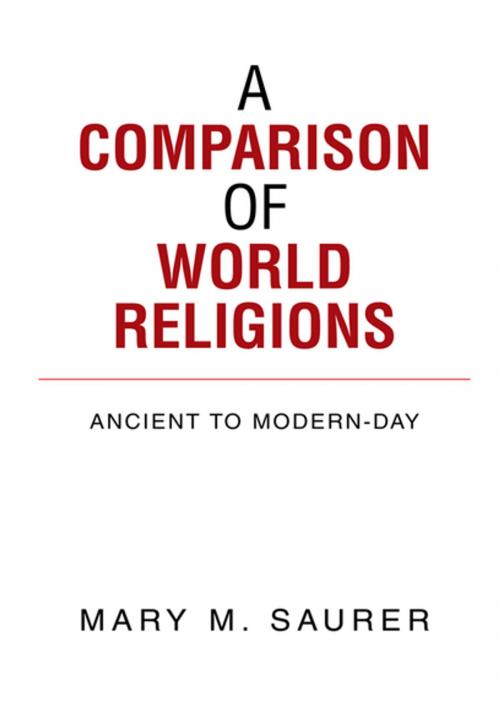| Author: | Mary M. Saurer | ISBN: | 9781462844050 |
| Publisher: | Xlibris US | Publication: | November 22, 2005 |
| Imprint: | Xlibris US | Language: | English |
| Author: | Mary M. Saurer |
| ISBN: | 9781462844050 |
| Publisher: | Xlibris US |
| Publication: | November 22, 2005 |
| Imprint: | Xlibris US |
| Language: | English |
Human beings have inhabited the world for millions of years, and the oldest religious art found in caves and on bones dates as far back as 30,000 years. From earliest times, and still today, people share their ideas and form a group with others who have drawn similar conclusions about the meaning of life and the ultimate reality. They might call their group a religion; others might call it a cult. But the name they give to their concept of God does not mean that they worship a different god, only that they hold a different concept of the Source and Power of that which was, is and always will be. Every religion serves as a way of life, an opportunity to practice ones accepted beliefs, and a way to socialize with those who hold similar views. Religions can be dictated, but beliefs cannot. They are private and unique to the individual. It is ones own experience with that which he or she perceives as God that prompts the acceptance of a belief system, quiet endurance when there seems to be no choice, or the withdrawal from religion altogether. Public and personal wars have been fought in the name of righteous indignation in support of different belief systems that came from efforts to answer the questions of life. Many individuals have lived lives of frustration and confusion as a result of the commonly accepted belief system of the culture into which they were born. In this study we look briefly at the historical and geographical conditions related to the emergence of specific religious views, and the situation of the people whose lives are influenced by them. Our intent is not to determine which religion is right or wrong. Using a comparison point chart, we examine the basic premises of each belief system and how the holding of a premise impacts the lives of those who live it as if it were true.
Human beings have inhabited the world for millions of years, and the oldest religious art found in caves and on bones dates as far back as 30,000 years. From earliest times, and still today, people share their ideas and form a group with others who have drawn similar conclusions about the meaning of life and the ultimate reality. They might call their group a religion; others might call it a cult. But the name they give to their concept of God does not mean that they worship a different god, only that they hold a different concept of the Source and Power of that which was, is and always will be. Every religion serves as a way of life, an opportunity to practice ones accepted beliefs, and a way to socialize with those who hold similar views. Religions can be dictated, but beliefs cannot. They are private and unique to the individual. It is ones own experience with that which he or she perceives as God that prompts the acceptance of a belief system, quiet endurance when there seems to be no choice, or the withdrawal from religion altogether. Public and personal wars have been fought in the name of righteous indignation in support of different belief systems that came from efforts to answer the questions of life. Many individuals have lived lives of frustration and confusion as a result of the commonly accepted belief system of the culture into which they were born. In this study we look briefly at the historical and geographical conditions related to the emergence of specific religious views, and the situation of the people whose lives are influenced by them. Our intent is not to determine which religion is right or wrong. Using a comparison point chart, we examine the basic premises of each belief system and how the holding of a premise impacts the lives of those who live it as if it were true.















